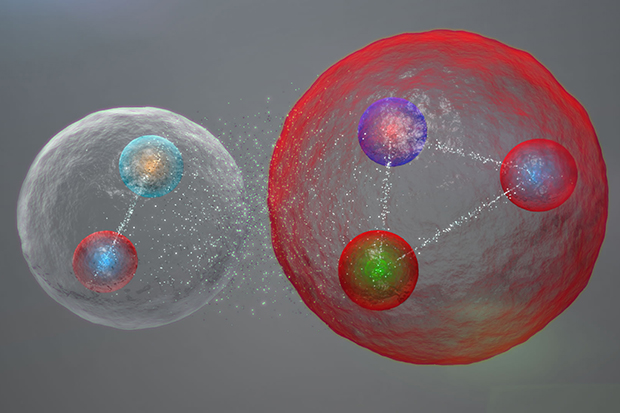Physicists at the Large Hadron Collider at CERN announced definite proof that pentaquarks exist on in the journal Physical Review Letters. This is the first evidence that the theoretical particle proposed by physicists Murray Gell-Mann and George Zweig in 1964 actually has a physical existence. The practical application of the discovery is an improvement in the understanding of the basic energy and substance that all matter is made of.
Quarks are the fundamental particles that matter is composed of. Quarks are not seen except in very controlled conditions like the experiments at CERN and in the nuclear explosions that create light from stars. A five particle quark is now known to be a transition state that produces by the decay of a quark containing particle known as Lambda b. The evidence of the existence of pentaquarks is two peaks on a chart produced in the experiments that are called Pc(4450)+ and Pc(4380)+.
Pentaquarks are composed of two up quarks, one down quark, one charm quark, and one anti-charm quark. While quarks are not readily seen, the properties of quarks have been defined based on the examination of the composition and behavior of protons, neutrons, and electrons. The presence of an anti-charm quark in the pentaquark complex was theoretically predicted but is still not fully understood. Anti-quarks are the basic building blocks of antimatter.
The discovery was made possible by a new method of observation developed at CERN. The researchers looked for pentaquarks at an angle and with the lights on. This experimental set up is different from any previous attempt to find the particle. The next step in the examination of the pentaquark is the determination of how the five particles are held together. The discovery ranks with finding the Higgs particle in that it completes the set of basic particles that compose matter according to the Standard Model.















